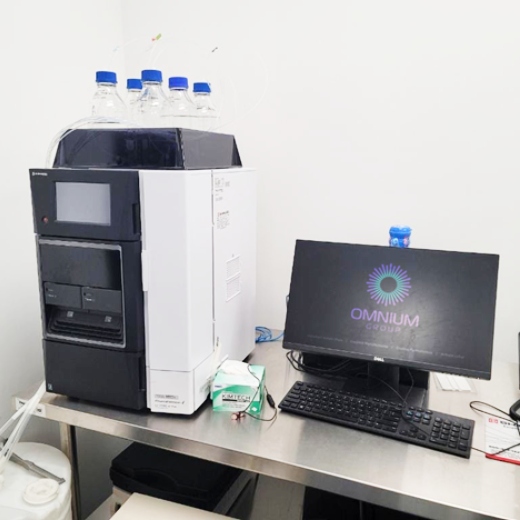Although not everyone is familiar with HPLC, this process is very much important not only to consumers, like every one of us but as well as to manufacturers to ensurer safety. You may be raising an eyebrow now. What is the HPLC principle? What does HPLC stand for? What HPLC is used for? What can HPLC detect?
Here, allow us to make it easier for you to understand how HPLC is used for the analysis of the products that we consume and the role it plays in water purification, detection of impurities, pre-concentration of trace components, and many other of its applications.
Frequently Asked Questions on HPLC
1. What is HPLC? What does it stand for?
HPLC (stands for High-Performance Liquid Chromatography) is an analytical technique commonly practiced in the pharmaceutical industry to separate, identify, and quantify components in a mixture – when these compounds are non-volatile, thermally unstable, and possesses relatively high molecular weights. HPLC is considered the single best chromatography technique essential to most laboratories worldwide.
2. HPLC is used for?
Basically, HPLC is utilized for biochemical analyses (from adsorption to partition, ion exchange, and steric exclusion chromatography). Through this technique, determining the plasma levels of drugs and their metabolites becomes more precise and accurate: an essential step in the development of new drugs.1 During the manufacturing process, the results are used to analyze the finished drug products and the quality and quantity of their ingredients.2
3. How does HPLC work?
Probably at first glance, the complex assembly of modules and tubing might look uninteresting (especially if you are not into laboratory works). However, if you start to get to know the roles of each component and begin to understand how they work, you will realize how user-friendly the HPLC system actually is. You will understand why it became a popular technique, aside from being an affordable solution on separation, identification, and quantification of constituents of complex organic samples.
As shown in the image below, a reservoir is utilized to hold a solvent. This is referred to as the mobile phase. The solvent drip through a column filled with an adsorbent under gravity in the column chromatography. A pump forces a solvent through a column under high pressure (of up to 400 bar) – the specific packing material need for separation. This column packing material is usually made of solid particles such as silica or polymers.
In order to see the separated compound bands, a detector is needed. This detector sends information to a computer that generates the chromatogram.
The partitioning process of HPLC is somehow similar to the liquid-liquid extraction process only that HPLC is a continuous process while the other extraction method follows a step-wise process.
4. Why do I have to know about HPLC?
Whether you are expanding your brand or planning to start a business, it is important that you are familiar with the techniques and processes have undergone in the formulation and development of your products. FDA-regulated facilities, like the ones we have that are located in Hauppauge, New York, Apex, North Carolina, and Huntington Beach, California, utilize HPLC analysis for product validation that can be used for both qualitative and quantitative analysis.
We, at The Omnium Group, use High-Performance Liquid Chromatography with robust method development for accurate detection – to test both raw materials and our finished products. We do this to test and verify that the raw materials we use are of the correct purity and grade of the product. Aside from this, we also utilize the HPLC capabilities to reverse engineer formulation, solve product failure problems, perform analyses, and look for possible contaminants or other impurities. By doing so, minimizes the chances of having our products recalled and ensuring our brand partners the products that we manufacture are of top quality.
Aside from the HPLC technique, we also have in-house environmental chambers that can help determine the product’s shelf life, stability and packaging, light exposure and temperature evaluation studies, electronic component burn-in, TAPPI testing, and photostability. At The Omnium Group, we take to heart our commitment of providing full service, contract manufacturing, and private label company, offering turnkey solutions to our brand partners. Contact us here and get to know more about our unparalleled quality of services and excellence in the manufacturing industry.
References:
1 Schmid J, Beschke K. Einsatz der Hochdruckflüssigkeitschromatographie (HPLC) in der biochemischen und medizinischen Analytik [The use of high-performance liquid chromatography in biochemical and medical analyses (author’s transl)]. Arzneimittelforschung. 1978;28(11a):1969-74. German. PMID: 582527.
2 Nikolin B, Imamović B, Medanhodzić-Vuk S, Sober M. High-performance liquid chromatography in pharmaceutical analyses. Bosn J Basic Med Sci. 2004 May;4(2):5-9. DOI: 10.17305/bjbms.2004.3405. PMID: 15629016; PMCID: PMC7250120.
